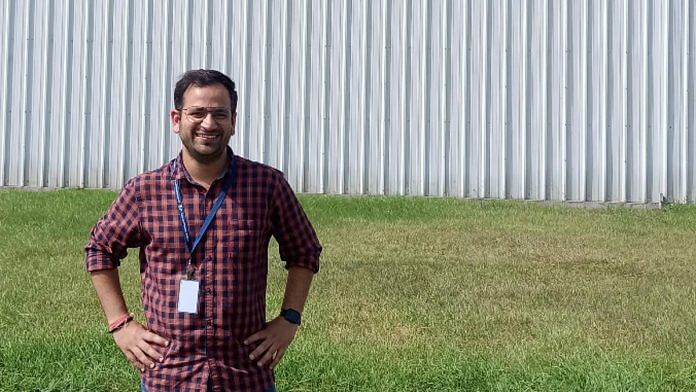New Delhi: For IIT-Roorkee research scholar Prateek Tripathi, it was a proud moment when his internship research at the National Aeronautics and Space Administration (NASA) required him to use lunar data of Chandrayaan-1.
The 28-year-old, who is a fifth-year doctoral student of Geomatics Engineering Group in the Civil Engineering Department, was selected for NASA’s 10-week summer internship and got an opportunity to work on the first crewed moon landing mission of the Artemis programme and the first crewed flight of the Starship Human Landing System (HLS) Artemis 3.
The internship, starting from 31 May to 5 August, is funded by the Universities Space Research Association (USRA) and accepted five students.
“It was such a moment of pride… We used data on the moon’s mineralogy collected by a device on the Chandrayaan-1 called the ‘moon mineralogy mapper’. Data analysed and used from this will help astronauts from the Artemis 3 to decide where to land on the moon,” Tripathi said, about his research at NASA.
Chandrayaan-1 was the first Indian lunar probe under the Chandrayaan programme. Launched by the Indian Space Research Organisation (ISRO) in October 2008, it was operated until August 2009. The mission included a lunar orbiter and an impactor.
Tripathi’s work involved research on the Shackleton, one of the craters on the South Pole of the moon, where the astronauts of Artemis 3 are scheduled to land. With his expertise in remote sensing and moon’s geology, Tripathi’s task involved figuring out the exact spot where the crew can land.
With his research, Tripathi was able to find that an astronaut can travel to and fro from the landing site to an accessible Permanently Shadowed Region (PSR) within two hours.
His work evaluates parameters such as slope, temperature, illumination, and walking time for probable traverse plans from the landing sites to the PSRs. The PSRs contain a fossil record of hydrogen, water ice, and other volatiles dating from the early solar system. Their investigation is of particular interest to scientists, and forms a core objective of NASA’s Artemis 3 mission.
The internship is hosted by the Lunar and Planetary Institute to integrate scientific input with exploration activities in a way that mission architects and spacecraft engineers can use.
The internship will help Tripathi further his PhD research on characterising the mineralogy of the earth, the moon, and the Mars.
Praising the infrastructure at IIT Roorkee, he said: “I was delighted to find that I was able to use all the equipment at NASA since I was already using it at IIT-Roorkee.”
Tripathi’s research guide at IIT-Roorkee, Prof. Rahul Dev Garg, said the recognition was well-deserved. “Prateek is dedicated to his work and richly deserves this opportunity. I am sure he will apply in India his learnings at NASA so that the nation can benefit.”
Also Read: China is going to take over the Moon, NASA head says. But here’s why that won’t happen soon
‘Students need to conduct their own research’
Remote sensing, a niche field of study in which Tripathi has a Master’s degree, was one of the accomplishments which made him stand out in his application. “The internship is highly selective and only five students out of over 300 applicants were selected,” he said.
The IIT research scholar claimed that three candidates from India were selected prior to him for the internship.
While Tripathi said being a part of the internship was an enriching and motivating experience, it was his participation in research seminars which gave him the edge among his competitors.
“It is important that students conduct their own research and regularly present their papers in seminars. In addition to this, using social media for finding such opportunities is a great way to keep updated. ISRO and NASA have several such interesting programmes,” Tripathi said, encouraging other students to apply for similar fellowships.
(Edited by Nida Fatima Siddiqui)
Also Read: Why can’t a rocket just be ‘thrown off’ Earth’s surface? Launch windows are important



